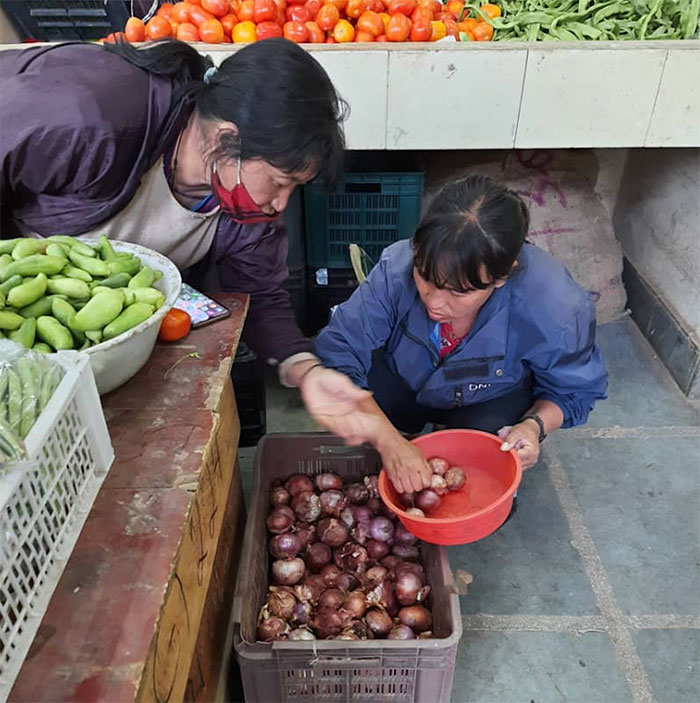
Some vegetable stalls have run out of onions
Chhimi Dema
The good news of imported onions arriving in towns turned sour as its price spiked as high as Nu 180 a kg.
Agriculture marketing and cooperatives’ Chief Marketing Officer Yonten Gyamtsho said that the difference in landed cost changes the price in respective dzongkhags.
Landed cost refers to the total cost of getting a shipment to its destination. It was subjected to change based on the transportation and procurement costs, he said.
To prevent exorbitant rates by wholesalers and retailers, agriculture and forests ministry issued a notification with fixed rates for onions and tomatoes last month. The rates were inclusive of operational cost, handling losses and overhead charges.
According to the notification, wholesalers could add operational cost of 15 percent to the landed cost. The retailers then add an operational cost of 20 percent to the wholesaler’s rate.
A vendor in Thimphu was selling onions at the price of Nu 120. “I sold it cheaper than others. Some are selling between Nu 180 and Nu 200. I had to add the transportation cost otherwise there is no profit,” he said.
Some customers said that the onion price was poorly regulated.
“Retailers took advantage of the Covid-19 situation and charged exorbitant rates to the customers,” a customer said.
Food Corporation of Bhutan Limited (FCBL) Director Dorji Tashi said, “The onion price rise is caused by the price escalation in India.”
As of yesterday, the price for 1kg of onion in Siliguri was between Rs 78 and 80, he said.
Office of Consumer Protection (OCP) official, Jigme Dorji, said that the office received complaints from consumers on the price hike.
He said, “The monitoring teams from OCP have been monitoring and advocating on the prices.”
If the vendors fail to comply then we will take action, he said.
FCBL would import 150 metric tonnes of onions every month until December.

